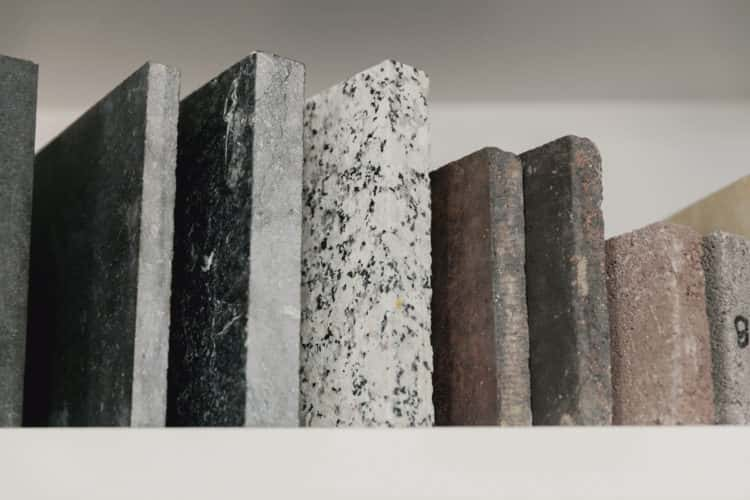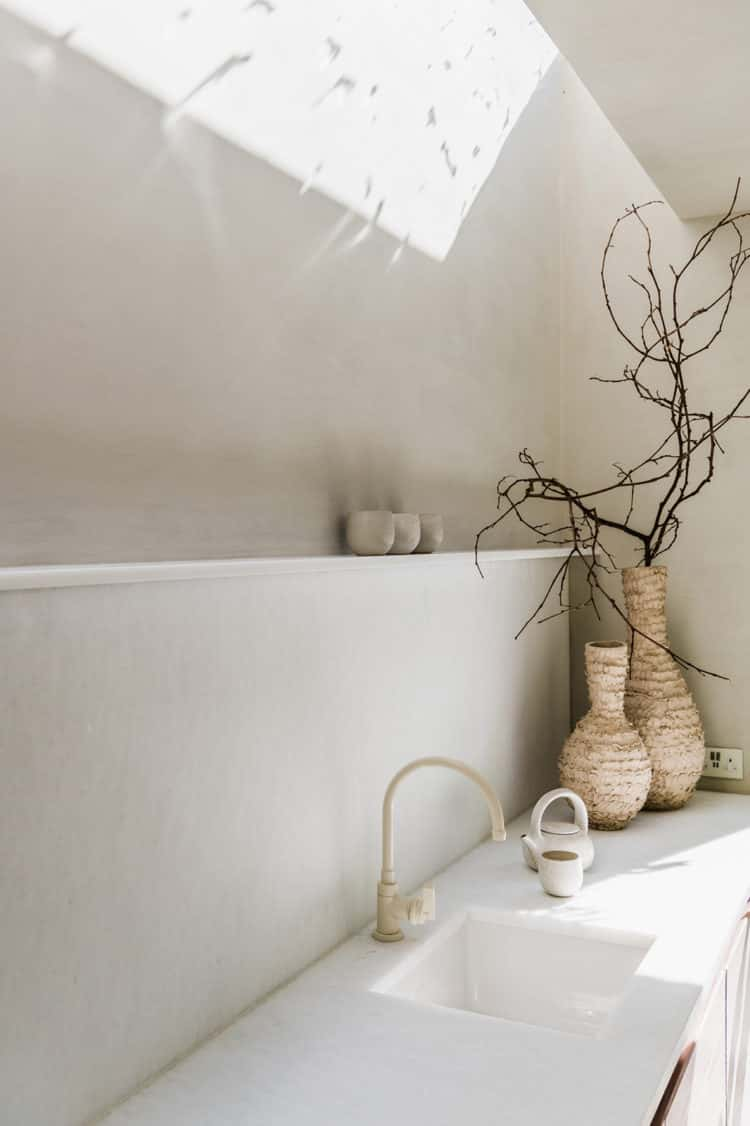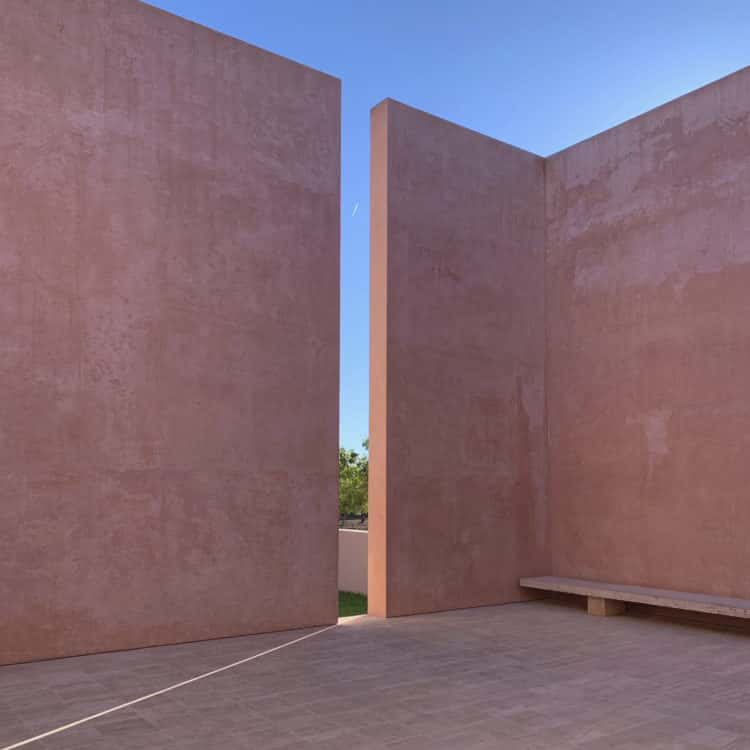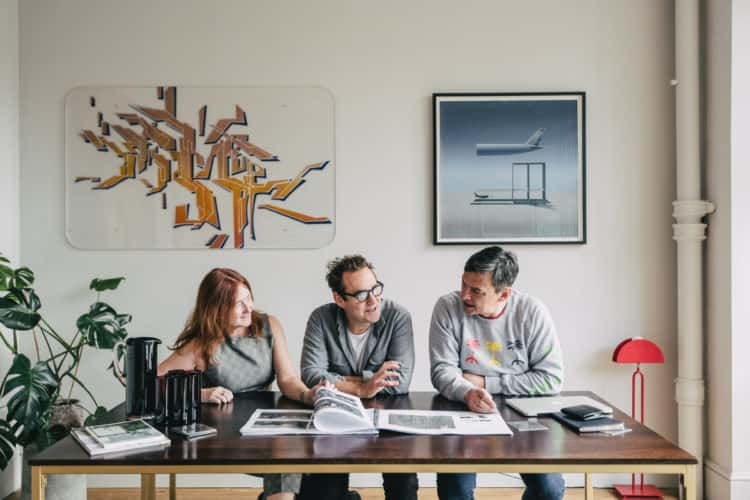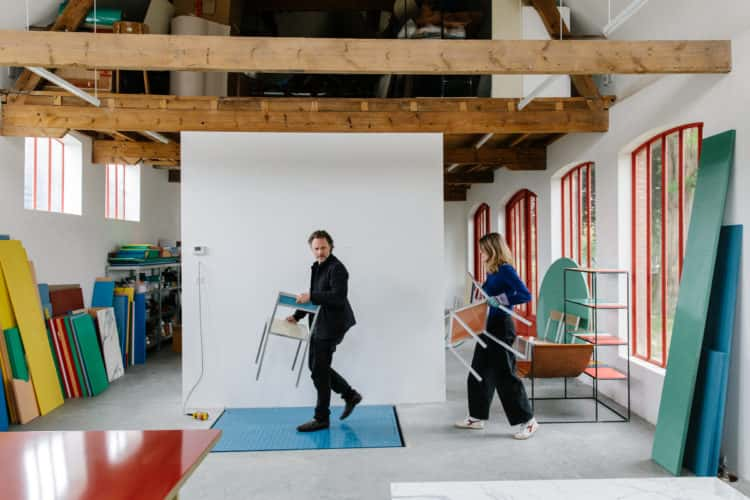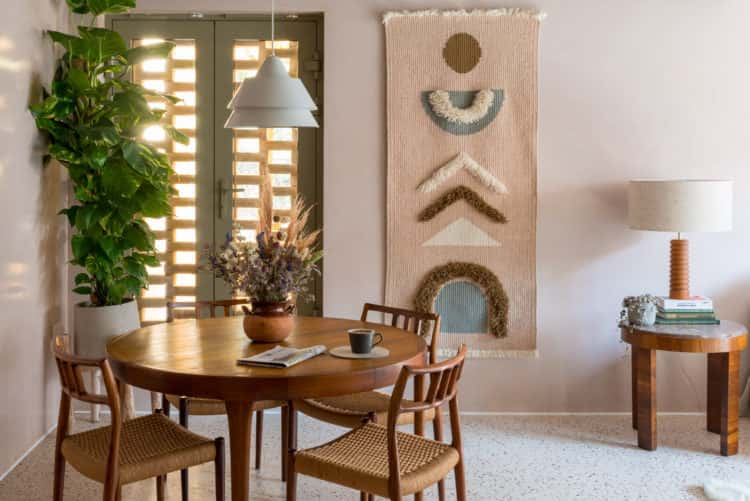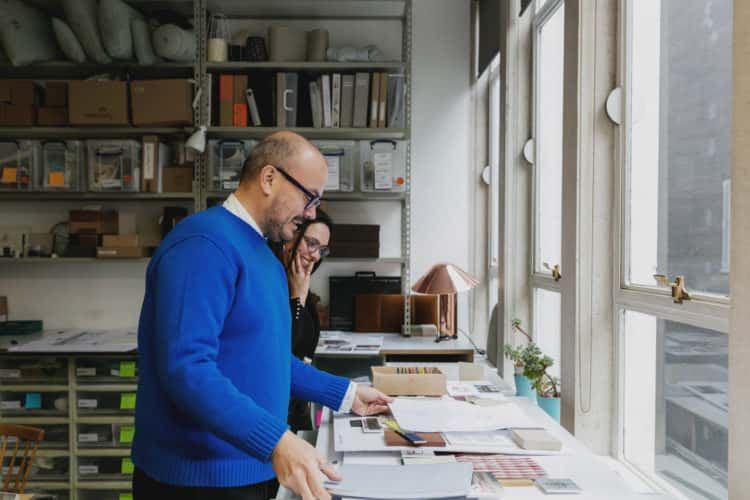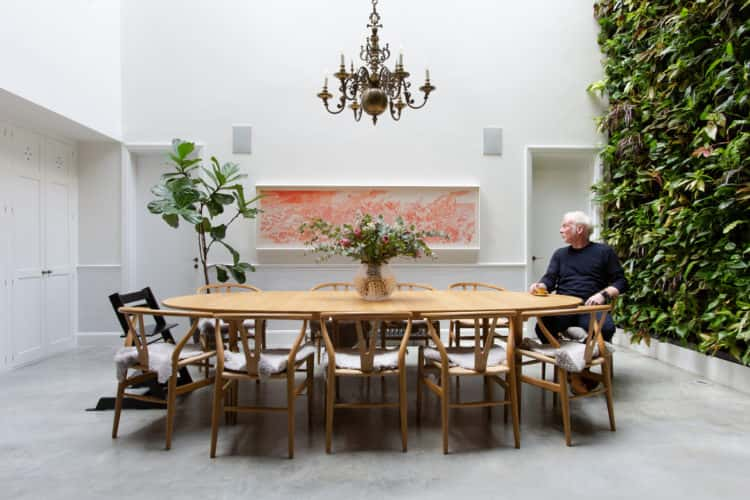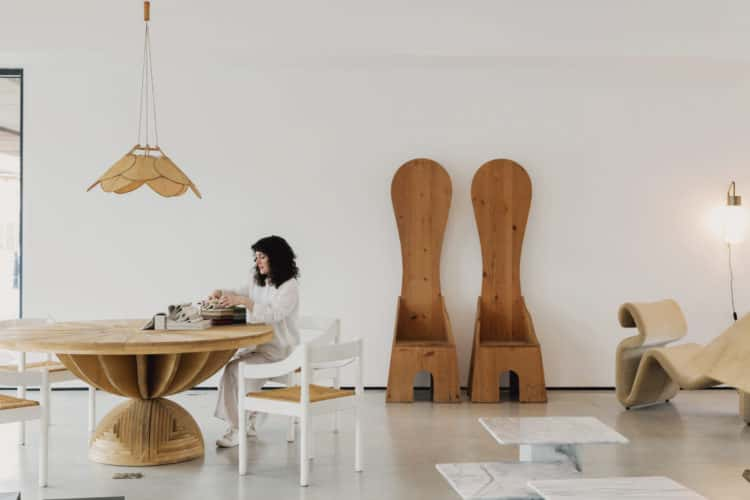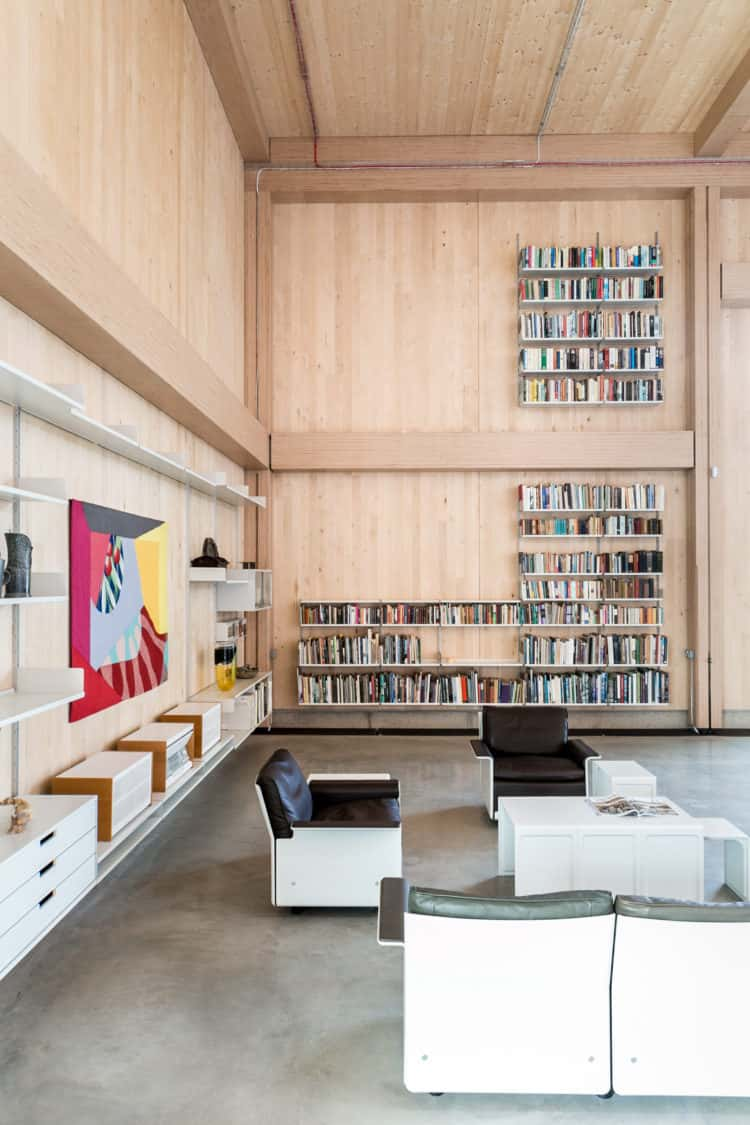A to Z of Modern Living: architecture studio McLaren.Excell talk materiality, minimalism and simplicity at their west London studio
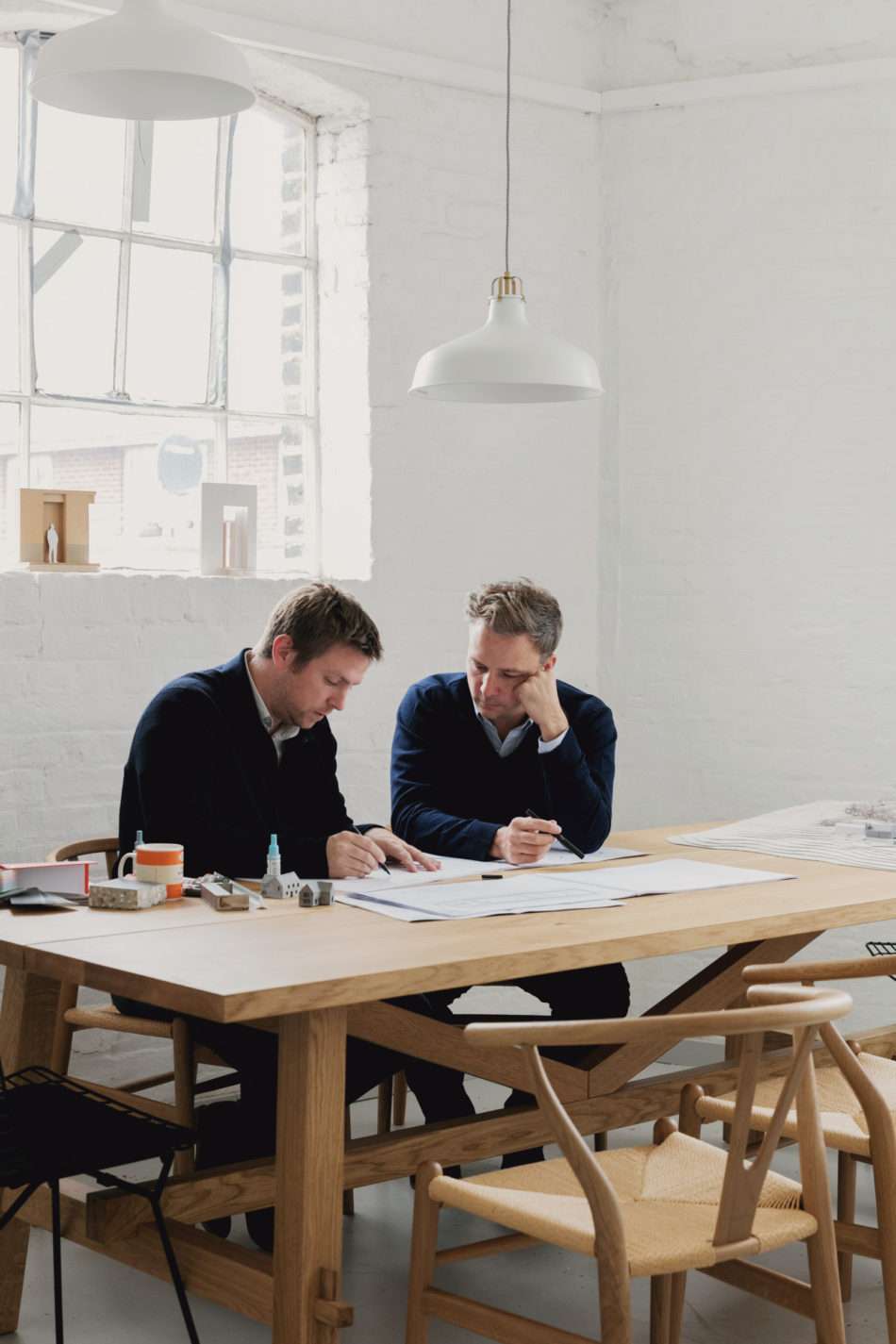
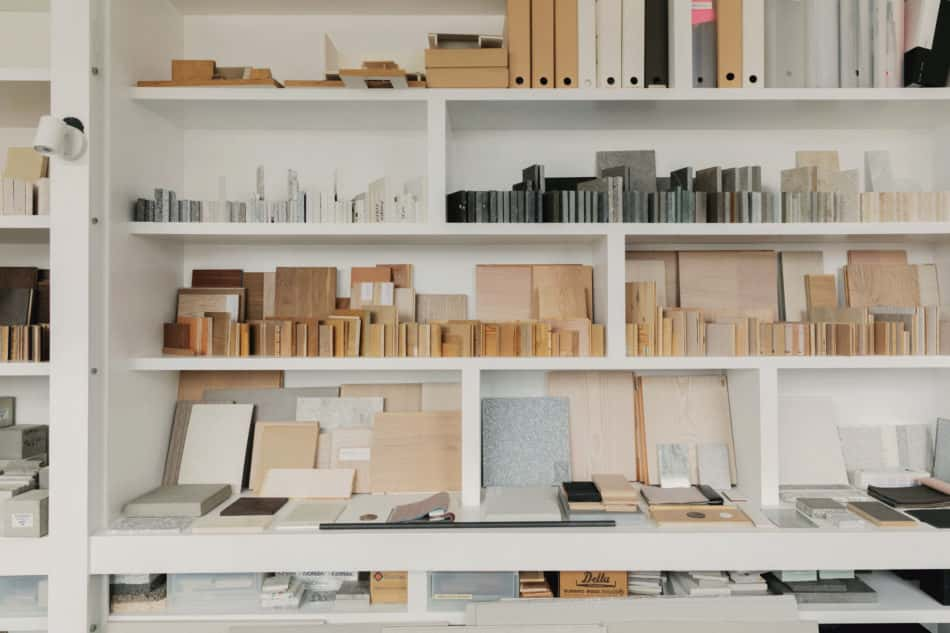
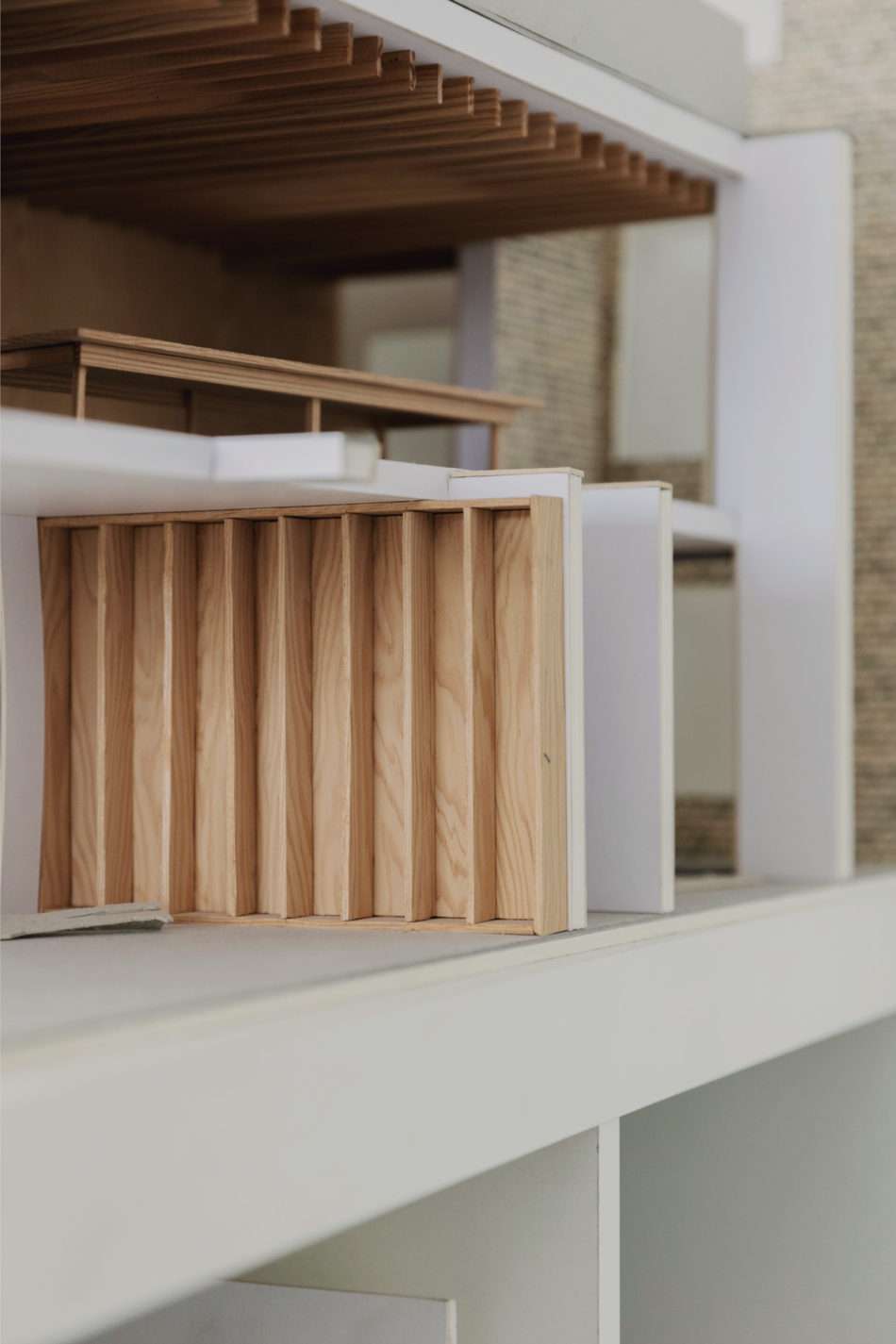

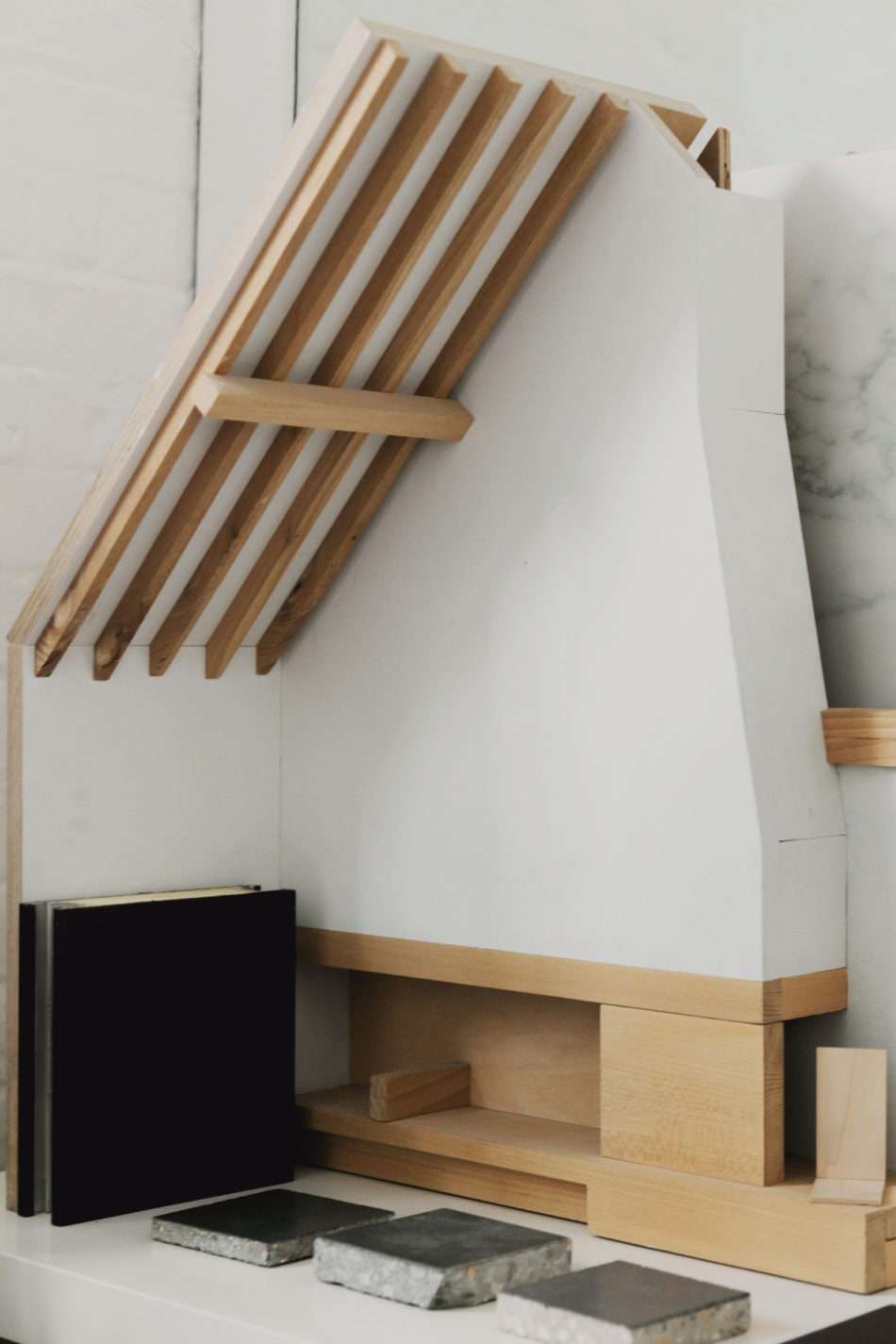
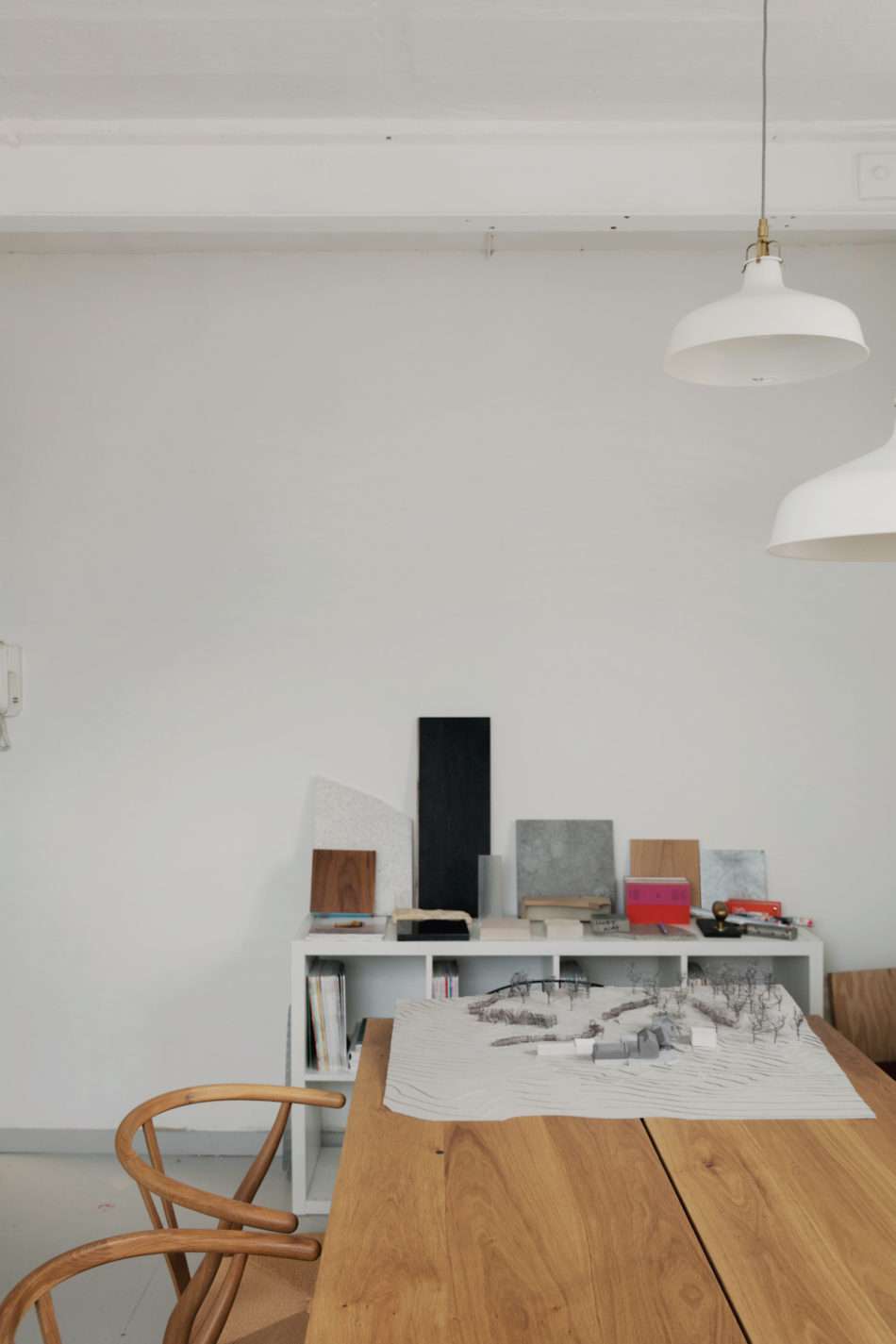
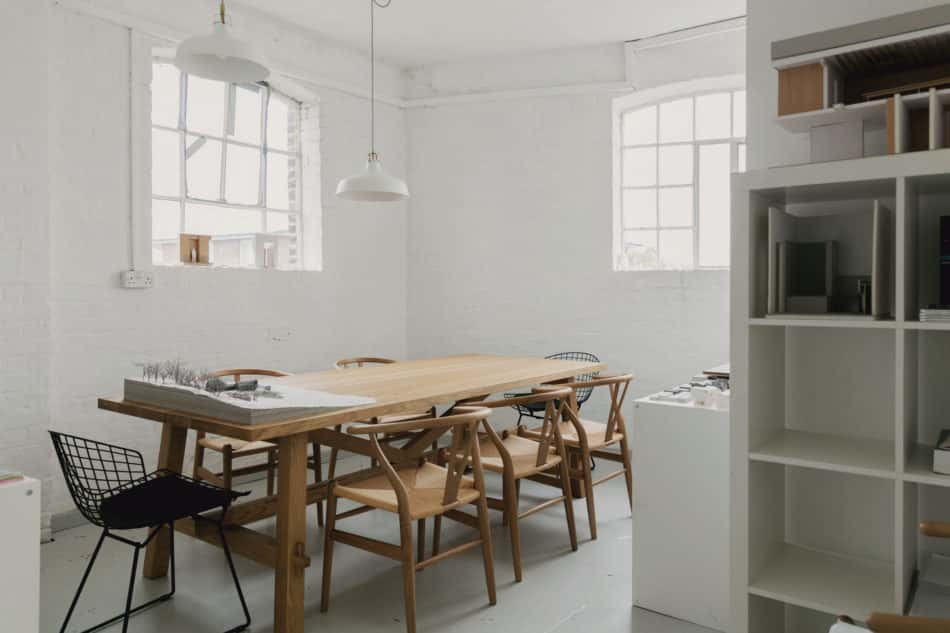
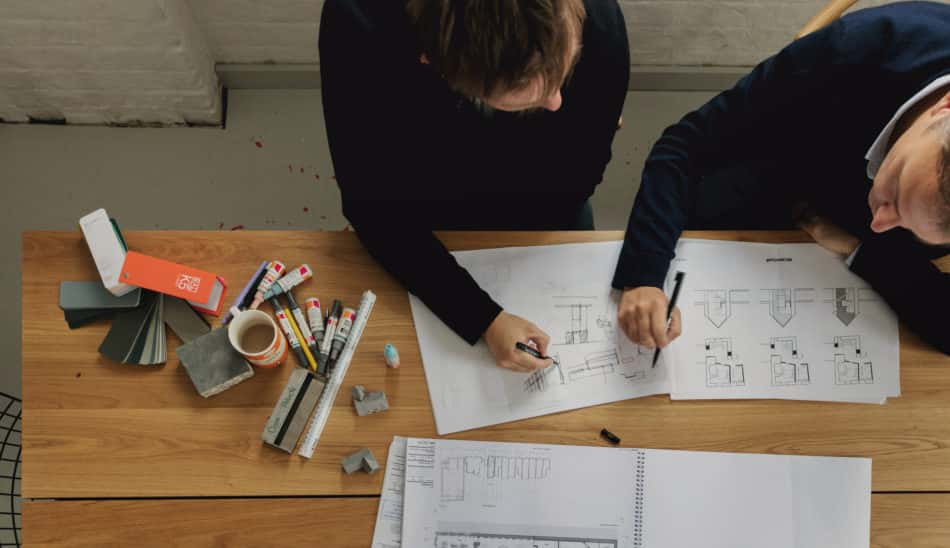
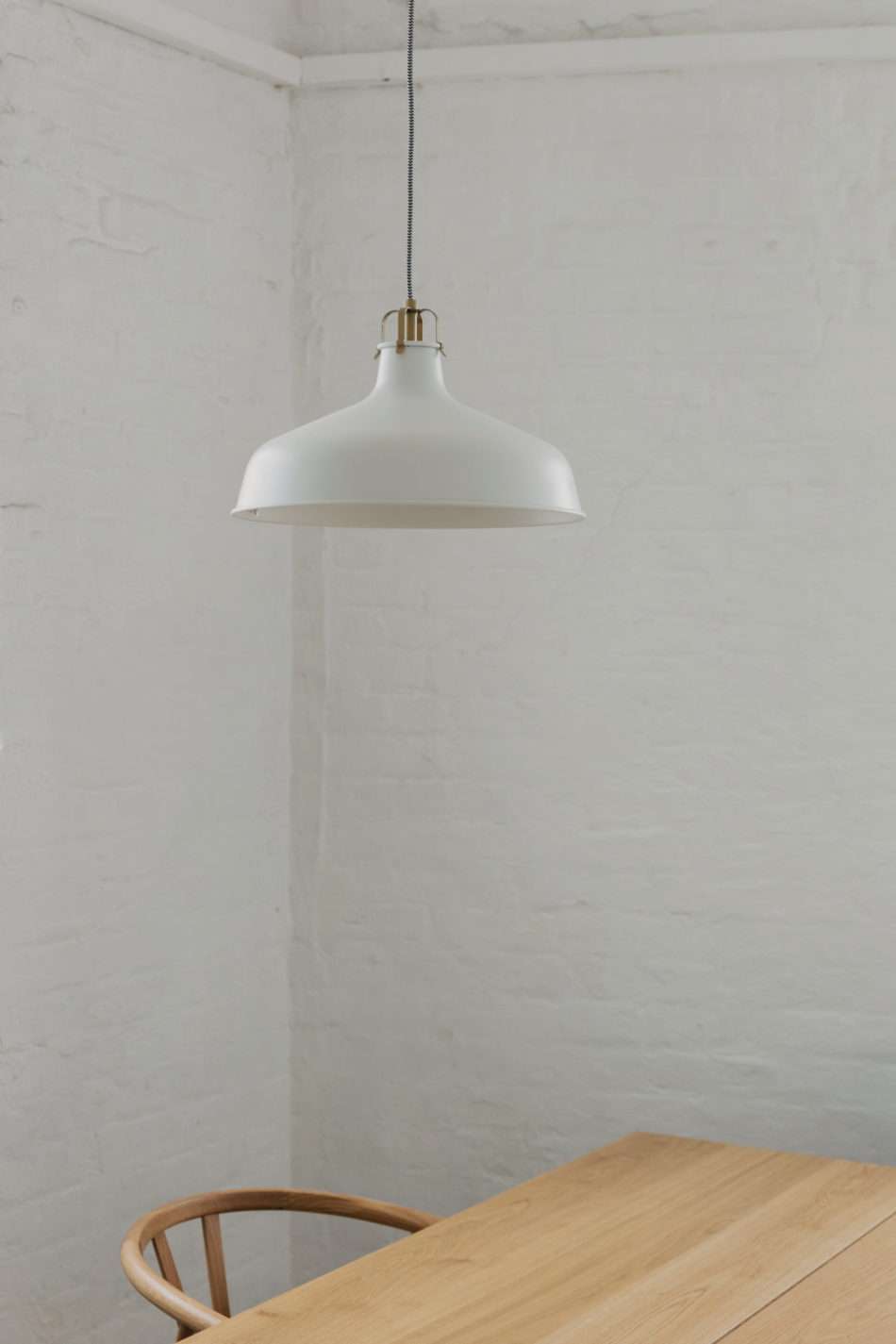
Last year we sold Noble Barn, a Grade
II-listed Victorian agricultural building with a light-touch, contemporary
interior by architecture practice McLaren.Excell.
It’s a home of exceptional beauty, the result of a clear design vision that is
knowingly subservient to the original integrity of the building, a “fruitcake
of Victorian exuberance,” says Luke McLaren, one half of the west London-based
practice.
Intrigued to find out more about how the studio works to put out some of our favourite residential projects, defined by their clean lines and minimal material palettes, we met Luke and fellow director Rob Excell to get their take on materiality, minimalism, simplicity and why they stay well clear of fads.
Luke: “Do we design in a contemporary way? I’m not
sure that we do, to be honest. We’re dealing with the fundamentals of human
behaviour and that doesn’t particularly change. Yes, habits change maybe. And
technology influences the way we live. But, fundamentally, I hope that our work
transcends all that.
“We put a strong emphasis on the materiality of our projects and inevitably materiality is quite a timeless quality because a piece of oak, for example, is what it is, now and forever. And so our projects should, we hope, feel fairly natural.
“The timelessness of things like quality of space and daylight aren’t contemporary ideas – they’ve been used by architects and designers for centuries. Of course, the style is different, and that’s where the idea of modernity comes in, which is about something relevant for today without being faddy or ‘trendy’.
Rob: “We’re not interested in fads. As soon as you go down that route of being distracted by what’s in the latest interior magazines or what’s trending on Pinterest, you’ll get something tacky which might look good for a year but will quickly age. That way of designing is just not in us.
“We’re not looking to do things that are crazy exciting, we
are looking to do things that endure and are the outcome of a constant process
of refinement. And, whilst they might be exciting to other people to come and see
for the first time, we can never have that perspective on a project because we
can never see it fresh for the first time. We live with it, breathe it, sleep
on it and think about it for years sometimes. It’s a different type of beast
for us.
“We get asked to define the way we work a lot. We always
tend to look each other and shrug our shoulders. It’s a very, very hard
question to answer because a lot of it is intuition based, like any creative
discipline.
“Yes, of course you’re influenced by everything that’s out
there and no one can escape the onslaught of visual information that comes with
the modern world. But what selectively goes in and what doesn’t is what’s
important.”
Luke: “I think there are a lot of subconscious things that go into our projects and what’s quite funny is when we finish a job we quite often walk around the site and see a kind of a happy coincidence or alignment of two things that are sitting nicely. They’re satisfying moments but often we never understood them as being something on paper we were aiming to do. It’s like the finished building reveals that intuitive approach in a tangible, physical way.”
Rob: “What we are striving for with all our projects
is simplicity, which is very different from minimalism. Both have their place,
but minimalism is the prescribed desire to take something down to its most basic
constituent elements, and often comes with a ‘look’. And simplicity, I think,
is just a way of reducing design to central elements in a very elegant way,
which can take many styles.”
Luke: “Often the things
that appear most simple are hugely complicated to deliver. You have to be as
ruthless as you can with yourself to edit as much as possible and avoid the
temptation of showing off some idea you’ve been thinking out.
“And, you know, we’re not
perfect. I think we’re probably guilty at times of not editing enough.
Sometimes you can’t resist one too many ideas, but we try as much as possible
to constantly refocus.
“The richness is in that
reductive process. It’s like anything that’s really wonderful, whether it’s a
novel or a painting or a building or whatever, it’s usually because it’s
beautifully simple.”
Rob: “People, I think, tend
to be very fearful of simplicity. I think people prefer complexity if possible because
it means you don’t have to commit yourself to singularities. You can you can
pick and choose and keep your options open.
“So, I think something that all
designers probably struggle with when working to a commission, when you’re
providing a service as a designer, is winning people around to the idea that
less is more. And, like I just said, that doesn’t necessarily mean minimalism.
It just means taking an idea and expanding its full potential but keeping all
the mental clutter away and seeing that single idea through to a very beautiful
result.”
Luke: “But at the end of the day we’re aware that we operate in a bubble here, trying to produce beautiful work all day. But then we go back to our own homes, which have their own versions of chaos with kids’ paraphernalia everywhere and stuff. Real homes are full of broken things, furniture you’ve had for ten years and that chest of drawers that you bought when you were 20 but can’t afford to replace.
“So it’s hypocritical to be a style Nazi. Unless you live an extremely disciplined life or you have huge amount of money, you have to engage with the reality of living in a house. We live in a pragmatic and imperfect world so, yes, it is annoying when people fill our projects with crap, but we have crap in our lives too!”
Rob: “A lot of the focus on our projects is about how to live, as well as how to look. It’s thinking about the balance between beauty and practicality, because no one wants to have a home that only looks good when it’s spotless.”
